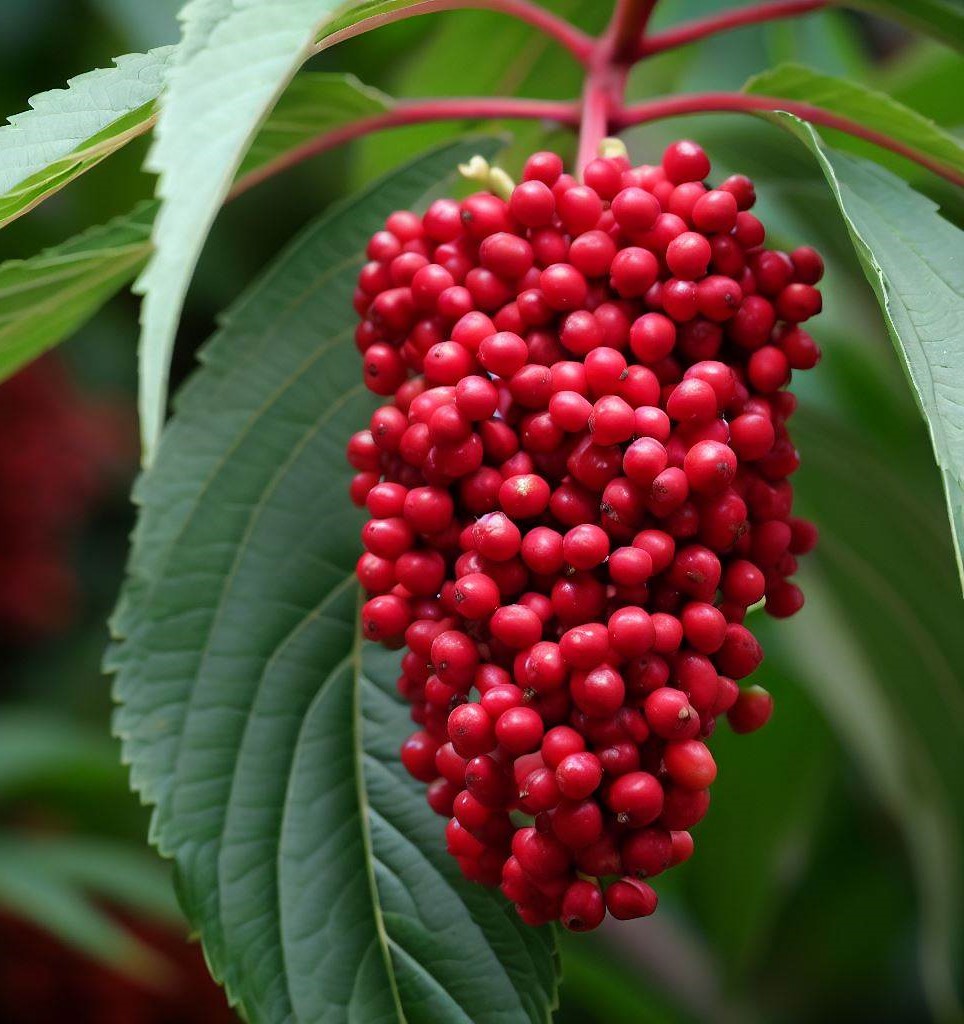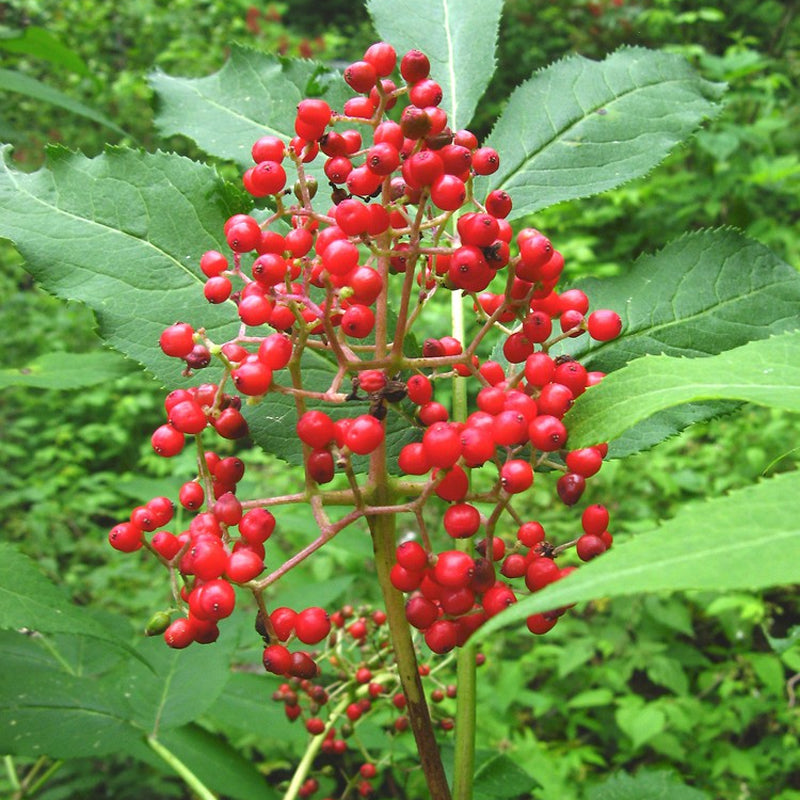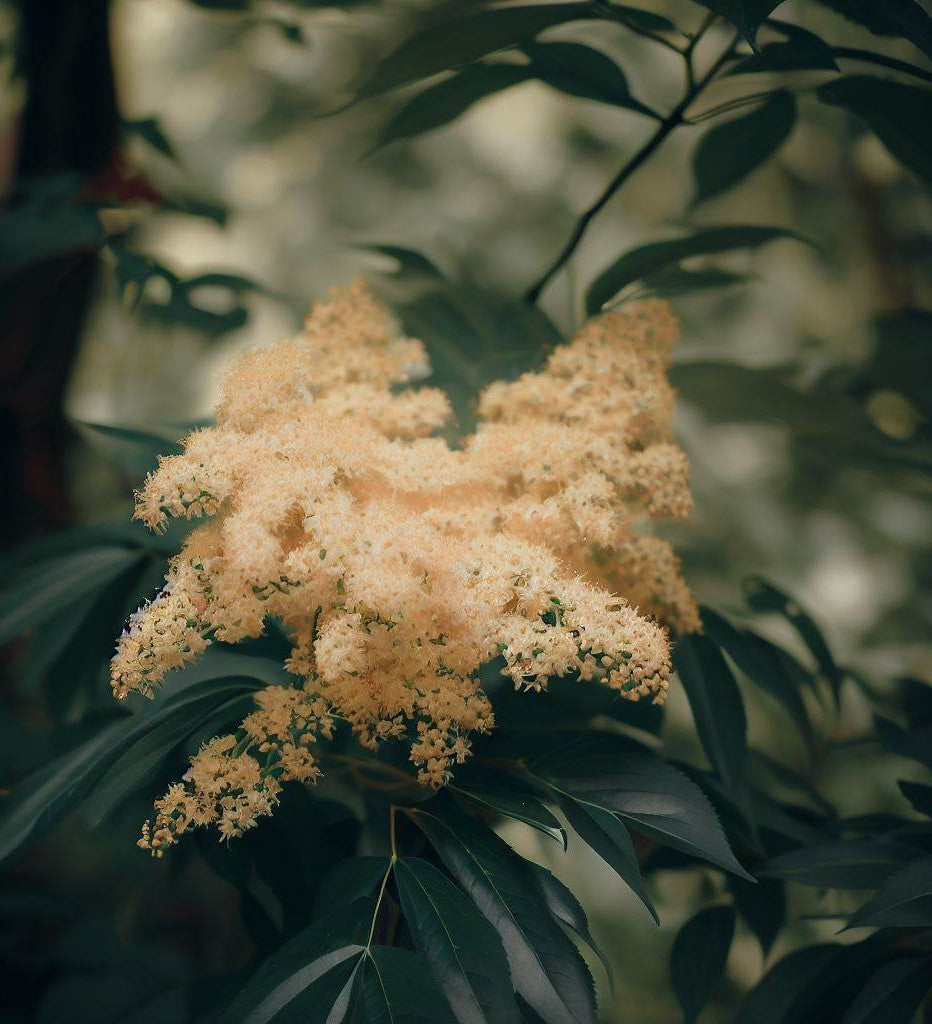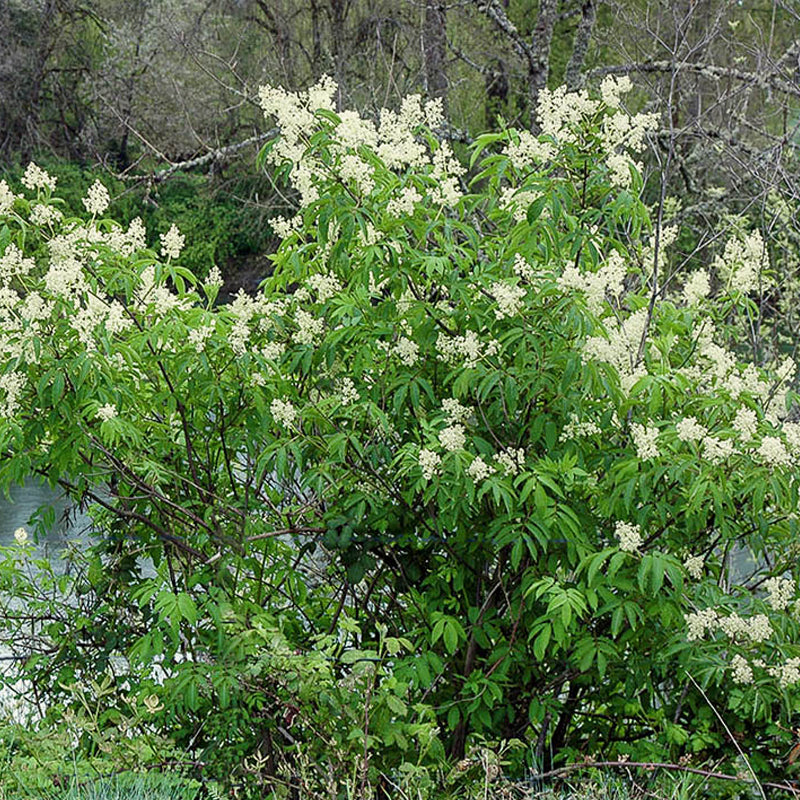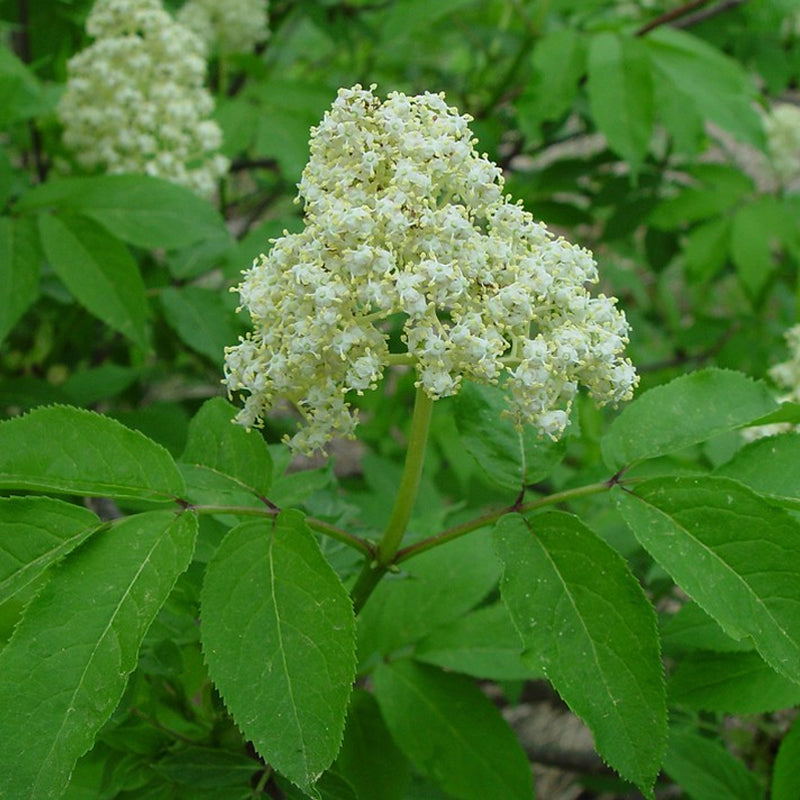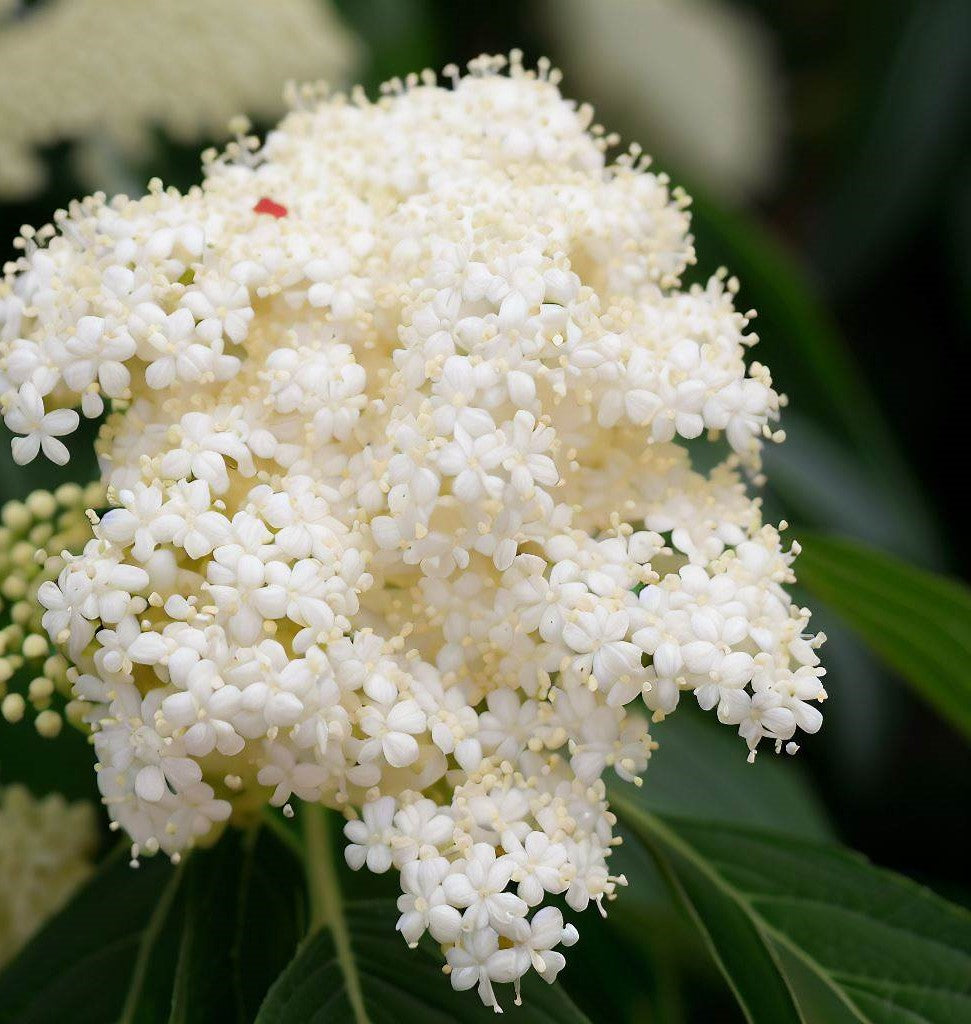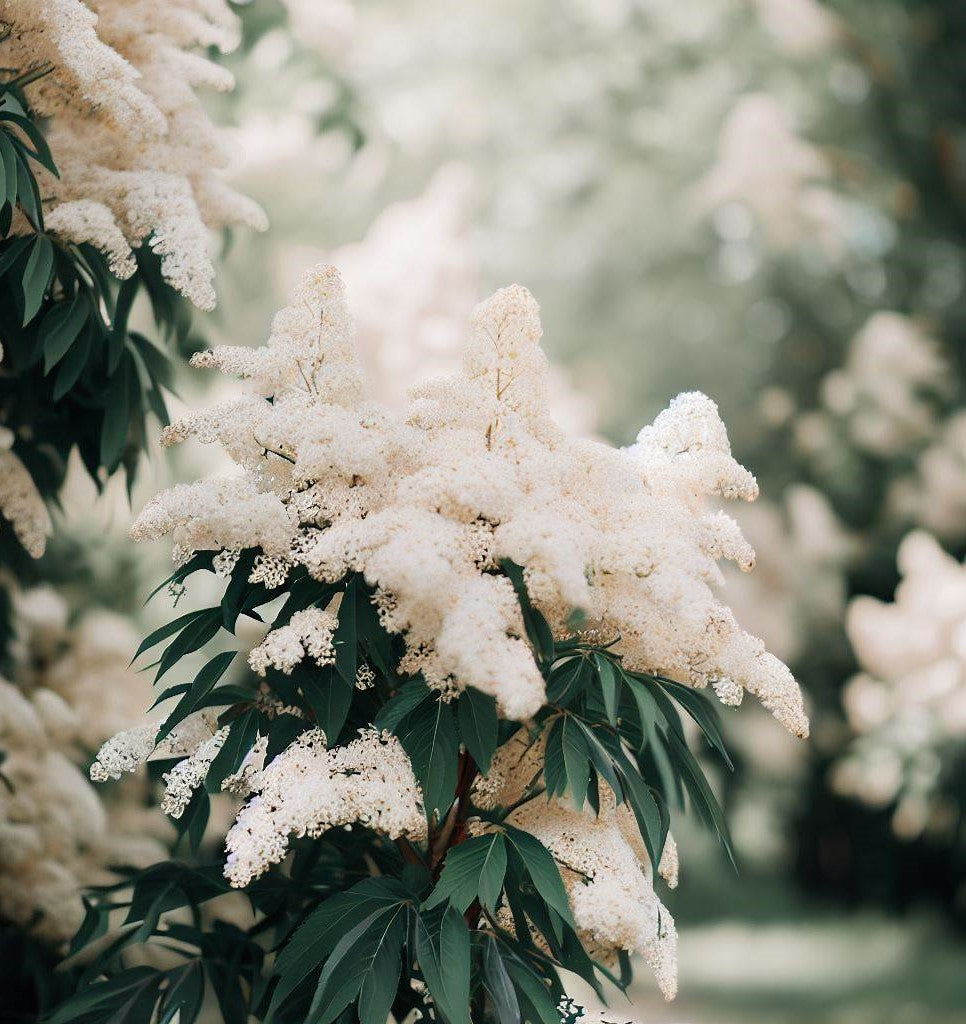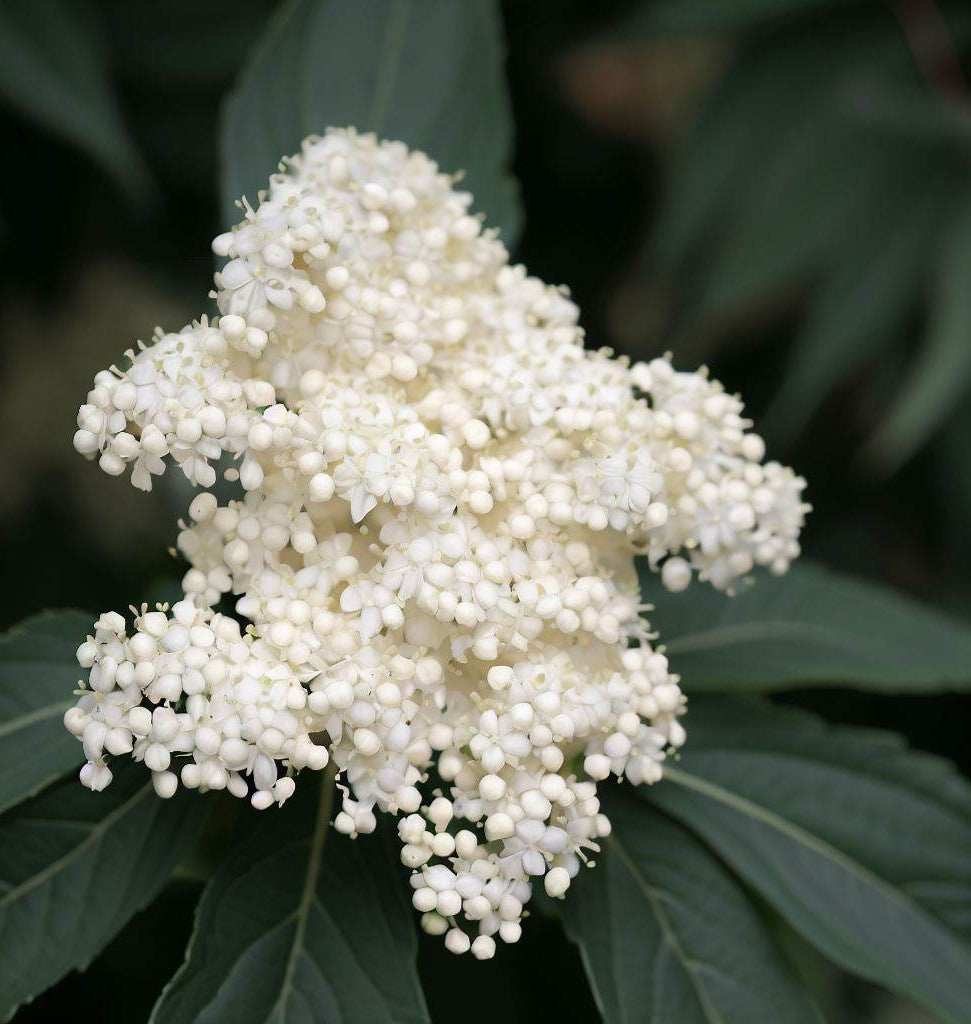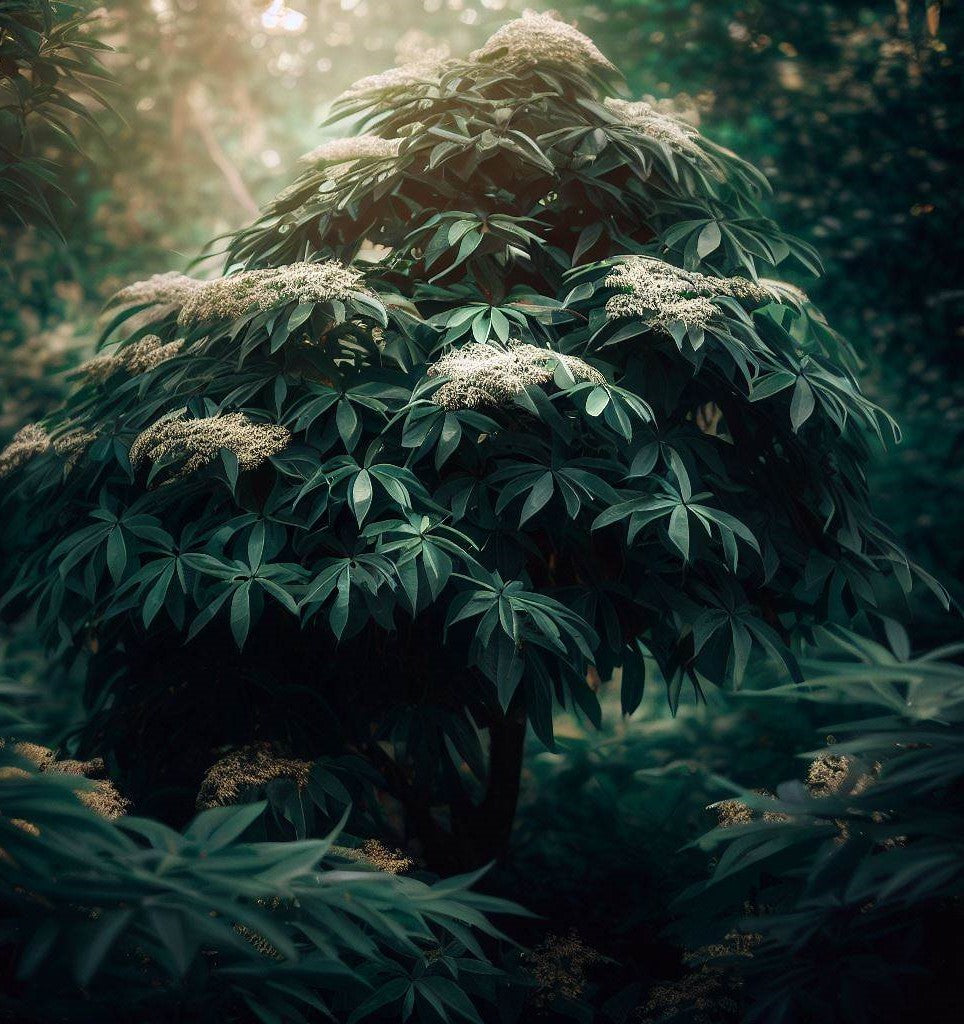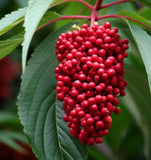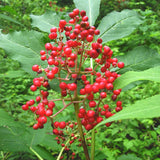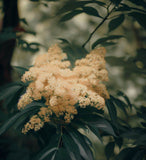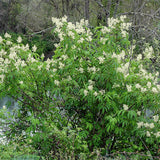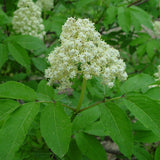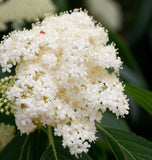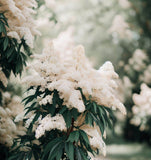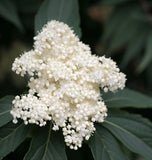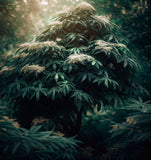Sambucus racemosa (European Red Elderberry)
Sambucus racemosa (European Red Elderberry) is a deciduous shrub native to Europe, Asia, and North America. It is known for its vibrant red berries, ornamental value, and ecological importance.
European Red Elderberry typically grows to a height of 6 to 10 feet (1.8 to 3 meters) and has a spreading, multi-stemmed habit. The shrub features compound leaves with 5 to 7 leaflets that are dark green in color and serrated along the edges. The foliage provides an attractive backdrop for the flowers and berries.
During late spring to early summer, European Red Elderberry produces showy clusters of small, white flowers. The flowers are arranged in elongated, cone-shaped clusters known as racemes. They are highly attractive to bees and other pollinators and add beauty to the landscape.
Following the flowering stage, the shrub develops clusters of small, round berries. The berries are initially green, turning from orange to bright red when fully ripe. While the berries are edible, it's important to note that they are mildly toxic when consumed raw. However, cooking or processing the berries can remove the toxins, making them suitable for use in jellies, jams, and other culinary preparations.
European Red Elderberry also plays a crucial role in supporting wildlife. The berries are a valuable food source for birds, which eat the ripe berries and help disperse the seeds. The shrub's dense foliage and branching structure provide nesting sites and shelter for birds and other small animals.
In terms of cultivation, European Red Elderberry is adaptable to a range of soil conditions, including moist to wet soils. It thrives in full sun to partial shade exposure. The shrub is relatively low-maintenance but can benefit from occasional pruning to maintain its shape and encourage healthy growth.
European Red Elderberry is not commonly cultivated for its culinary uses like other elderberry species but is primarily valued for its ornamental and ecological qualities. Its striking red berries, attractive flowers, and ability to support wildlife make it a desirable addition to native gardens, naturalized areas, and wildlife habitats.
Botanical Name : Sambucus racemosa
Common Name : European Red Elderberry
Height : 3-10 ft
Spread : 3-10 ft
Germination Info : Seed requires 30-60 days warm stratification followed by 120-150 cold
Hardiness zone : 4-8
Average seed per ounce : Approx. 18,750

